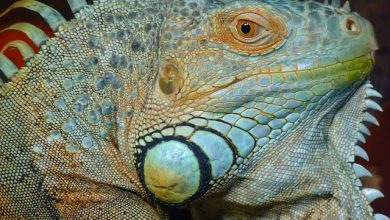Reptile Terms You May Not Know

Photo by Milchdrink
If youâre new to the reptile hobby, you may not quite have learned all the lingo yet. Like any hobby, herpetoculture (which is keeping reptiles or amphibians, by the way) has its own set of terms that fellow enthusiasts use with one another.
After reading this article, youâll have an understanding of the basics of what your fellow reptile enthusiasts and reptile keepers are talking about.
Morph
Morph is a term used to describe the color or patterning of a reptileâs skin. This term is used most often referring to various morphs in snake species; however, it is applicable to any reptile species with colors and patterns that have been bred into domestic animals.
X.Y. or X.Y.Z.
So, x.y. and x.y.z. are not terms you will actually see. The letters here are variables that can stand in for any number, and those numbers refer to the male, female, and unsexed animals available in a particular morph.
For instance, you may see a breeder selling a number of lizards with a sign marked 2.5.3. In this case, those numbers mean there are two males, five females, and three unsexed animals.
If there are only two numbers, all of the animals are sexed. The first number always refers to males, and the second number always refers to females.
Gut loading
Gut loading refers to feeding the feeder insects or other feeder animals that your reptile eats. Specifically, gutloading means providing a highly nutritious meal to the feeder around twenty-four hours before feeding it to your exotic pet.
Gut loading is an extremely common practice that helps to ensure that your reptile is getting the best nutrition possible.
WC
The abbreviation WC means âwild caught,â as in the animal has been caught in the wild. It is not recommended to keep wild-caught reptiles because they are more likely to carry diseases and parasites.
If you go to a reptile show, these animals are unlikely to be designated as wild-caught because they tend to be brought in illegally from other countries and usually need to be treated for parasites. You may, however, be able to distinguish them by their poor health compared to captive-bred specimens.
CB/CBB
As you may have guessed, CB stands for âcaptive bred,â although sometimes it is used to mean “captive born.” The similar designation, CBB, means âcaptive born and bred.â These are the animals you want to look for at exotic pet stores and reptile shows.
CBB is the best designation of reptile to look for because it is an animal that was bred from other captive-bred reptiles. If an animal is designated CB, it may have been born in captivity by a parent that was wild-caught. If you see a CB designation, you can ask the seller which is the case.
Captive-bred reptiles are more likely to have been better cared for and parasite-free.
Gravid
Gravid means that a female reptile is carrying eggs. This term can refer to a state of having either fertilized or unfertilized eggs. When a reptile appears gravid, she will lay eggs, but they may not necessarily have young reptiles in them.
Those are some of the common terms youâll come across when learning about reptiles. If you have questions about other reptile terms, reach out to The Tye-Dyed Iguana team on Facebook.



